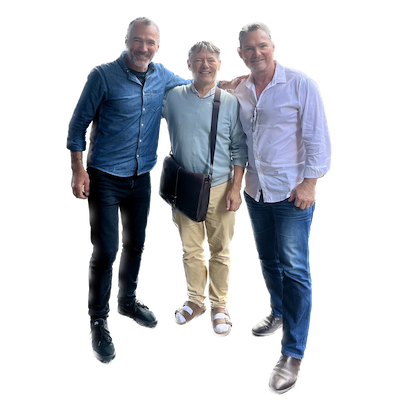In July 1988, an explosion on the Piper Alpha oil platform in the North Sea resulted in the death of 167 workers and the loss of over half a billion dollars in property. While it was a tragic accident, it was also a wake-up call for the industry and served as a stark reminder of the importance of safety systems in preventing catastrophic events.
It wasn't one isolated mistake that led to the disaster; rather, it was a series of failures at different levels, each of which could have been stopped had there been more robust safety measures in place. This incident underlines why understanding and applying safety models in the workplace is not just important - it's a matter of life and death
Pointing the finger
When accidents happen in the workplace, our first instinct may be to point the finger or find fault. Finding this distasteful, some look to the other extreme, with a "no fault" mentality. In reality, the answer tends to be nuanced.
When we consider the complex and interplaying circumstances that result in accidents, it can be helpful to take a step back and view the situation dispassionately. In reality, entire systems of contextual, psychological, and governance-related factors may have contributed to an accident.
Thankfully, industrial psychologists have done much of this puzzling for us, coming up with many useful theories that point to the connection between these interplaying factors, while also debunking several myths. This post looks at a safety classic, the Swiss cheese model, reviewing its strengths and weaknesses, and recommends how to improve on it.
Fact or Fiction: The “Error-Prone” Personality?
It can be tempting to believe that some people are simply more of a liability than others due to their personality. But is this perspective true or even helpful?
Back in 1919, researchers Greenwood and Woods conducted some of the first statistical studies on accident proneness. They put forward the idea that certain individuals were more prone to accidents due to their personalities.

Although the findings of this research initially appeared to support these scholars’ hypothesis, their research methods were later revealed to be biased.
Greenwood and Woods focused on very young or old men who were operating machinery in high-risk and stressful conditions, with increasing speeds and strict time constraints. The researchers also failed to consider the level of risk exposure faced by the so-called "accident-prone" groups.
Unfortunately, their findings conveniently aligned with the strategies of many factory managers at the time. These managers preferred to blame workers they believed to be inherently flawed, rather than taking responsibility for providing safe working conditions.
Findings like these likely contributed to a culture of blaming individuals directly involved in accidents, known as the "sharp end," while disregarding the broader systemic factors that may have contributed to the accidents.
The “Swiss Cheese” Model of Workplace Accidents
Clearly, it's important to approach accident analysis with a comprehensive perspective, rather than solely focusing on individual characteristics. That is, we should also consider factors such as workplace conditions, safety protocols, training programs, and communication systems.
In the 1990s, Psychology Professor James Reason proposed the Swiss cheese model as a way to understand and explain the complex nature of accidents and errors within systems. He was motivated by his extensive research in human error and system safety, and his work on flight safety in the aviation industry.

Reason believed that the best way to understand how accidents happen is to represent organizations as systems characterized by multiple lines of defense. He depicted these lines of defense as layered slices of Swiss cheese.
Each layer or slice represents a safety mechanism or control that is designed to prevent or mitigate errors, failures, or accidents. However, like a slice of Swiss cheese, these layers are not perfect and may have holes or weaknesses. So when all the holes line up across the layers of defense, workplace accidents will occur.
To illustrate, consider a trip hazard on a large construction site that leads to a workplace accident. The Swiss Cheese model would suggest the presence of many holes across different layers of defense that must align to lead to this eventual accident.
Such errors involve many varying psychological factors, including cognitive biases, lapses in attention, and much more.
Let’s explore some of these possible layers in depth.
Safety Guidelines and Procedures (First Layer)
At the top level, experts in safety psychology develop safety guidelines and procedures based on research and industry best practices.
These guidelines and procedures may include recommendations on maintaining clear walkways, identifying and removing trip hazards, and using appropriate footwear. However, if the guidelines fail to consider specific work conditions or human factors, such as worker fatigue or distractions, there may be gaps that increase the risk of trip accidents.

Management and Leadership (Second Layer)
The management team sets the tone for safety by emphasizing its importance and creating a positive safety culture.
They ensure that workers receive proper training on trip hazard awareness and provide resources, such as adequate lighting or anti-slip mats, to prevent accidents. However, if management does not prioritize safety or fails to address worker concerns about trip hazards, it can undermine the effectiveness of the safety culture and increase the likelihood of accidents.
Supervision and Oversight (Third Layer)
Supervisors and safety officers monitor the worksite to identify potential hazards, enforce safety measures, and intervene when unsafe behavior is observed.
Supervisors should ideally conduct regular inspections and address any hazards promptly. However, lapses in supervision or distractions can occur, leading to missed trip hazards or unsafe practices that could contribute to accidents.
Communication and Teamwork (Fourth Layer)
Effective communication and teamwork play a vital role in preventing trip accidents.
Workers should communicate about potential hazards, report any observed trip hazards promptly, and coordinate with others to maintain a safe working environment. Breakdowns in communication or lack of coordination can result in missed hazards or misunderstandings, increasing the risk of accidents.
Peer Observations and Feedback (Fifth Layer)
Workers observing each other's behavior and providing feedback can contribute to a safer environment.
If they notice trip hazards or unsafe practices, they can address them and help prevent accidents. However, if peer observations or feedback are not encouraged or valued, this layer of defense may weaken, and trip hazards may go unnoticed.

Personal Motivation and Responsibility (Sixth Layer)
Each worker's personal motivation and sense of responsibility for their safety and the safety of their colleagues are critical.
Workers need to prioritize following safety protocols, take precautions while walking or moving around the worksite, and report any potential trip hazards promptly. Failure to take personal responsibility or prioritize safety can significantly increase the chances of trip accidents occurring.
Issues with Swiss Cheese
One of the main criticisms of the Swiss Cheese model is – somewhat ironically – that it might oversimplify the complexity of real-world systems. Swiss Cheese assumes that all layers of defense are independent and that a failure in one doesn't impact the others. However, in reality, different safety mechanisms might be closely intertwined, and a failure in one could lead to cascading failures in others.
Moreover, the model tends to focus on failures and negative outcomes, rather than emphasizing positive, proactive measures that can be taken to improve safety. It's also criticized for not considering the role of decision-making in the management layer and how it can affect all other layers.
Alternatives to Swiss Cheese
While the Swiss Cheese model is a powerful tool for understanding accident causation, it's not the only model out there. Other models, such as the Human Factors Analysis and Classification System (HFACS) and the Systems-Theoretic Accident Model and Processes (STAMP), offer complementary perspectives. HFACS, for instance, was developed by the U.S. military and provides a framework for analyzing human factors associated with accidents.
HFACS categorizes human error into four tiers: unsafe acts, preconditions for unsafe acts, unsafe supervision, and organizational influences.
On the other hand, STAMP, developed by MIT professor Nancy Leveson, takes a systems approach, focusing on the complex interactions and feedback loops within an organization that can contribute to accidents. These models remind us that safety management is multifaceted, and different approaches can offer valuable insights into how to prevent accidents and improve workplace safety. We will explore these other models in future posts.

Scratchie: Your Extra Layer of Defense Against Workplace Accidents
In a nutshell, the Swiss cheese model recognizes that no single layer or control can guarantee complete safety, but by having multiple layers in place, the chances of an error or failure reaching its final consequence can be significantly reduced. Yet it tends to focus on negatives, and neatly ignores clusters.
A workforce that is proactively motivated to comply with safety guidelines serves as an extra line of defense against workplace accidents, as well as boosting existing defenses.
That’s where Scratchie comes in.
With Scratchie, worksite employees will be on the lookout for opportunities to celebrate their colleagues’ safe behaviors and in doing so, earn themselves recognition and rewards.
This increased motivation increases vigilance, safety communication, and personal engagement in workplace safety initiatives, providing extra protection against workplace accidents.
Ready to level up your safety game? Get in touch today to receive a free demo.
FAQ
What is the Swiss Cheese model of workplace accidents?
The Swiss Cheese model, proposed by Psychology Professor James Reason, represents organizations as systems characterized by multiple lines of defense against errors, failures, or accidents. Each layer or slice represents a safety mechanism or control. However, like a slice of Swiss cheese, these layers may have holes or weaknesses. When all the holes line up across the layers, workplace accidents can occur.
What are some criticisms of the Swiss Cheese model?
One of the main criticisms of the Swiss Cheese model is that it might oversimplify the complexity of real-world systems. It assumes that all layers of defense are independent and that a failure in one doesn't impact the others. Also, the model tends to focus on failures and negative outcomes, rather than emphasizing positive, proactive measures.
What are some alternatives to the Swiss Cheese model?
Other safety models include the Human Factors Analysis and Classification System (HFACS) and the Systems-Theoretic Accident Model and Processes (STAMP). HFACS provides a framework for analyzing human factors associated with accidents, while STAMP focuses on the complex interactions within an organization that can contribute to accidents.
What is the role of management in workplace safety?
Management sets the tone for safety by emphasizing its importance and creating a positive safety culture. They ensure that workers receive proper training on safety awareness and provide resources to prevent accidents. Effective management is crucial in establishing and maintaining a safe workplace.
How does communication contribute to workplace safety?
Effective communication and teamwork play a vital role in preventing accidents. Workers should communicate about potential hazards, report any observed dangers promptly, and coordinate with others to maintain a safe working environment. Breakdowns in communication can result in missed hazards or misunderstandings, increasing the risk of accidents.
What are "peer observations" in the context of workplace safety?
Peer observations refer to workers watching each other's behavior and providing feedback. If they notice hazards or unsafe practices, they can address them and help prevent accidents. This layer of defense may weaken if peer observations or feedback are not encouraged or valued.
How does personal motivation and responsibility affect safety?
Each worker's personal motivation and sense of responsibility for their safety and the safety of their colleagues are critical. Workers need to prioritize following safety protocols and report any potential hazards promptly. Failure to take personal responsibility or prioritize safety can significantly increase the chances of accidents occurring.
How does Scratchie help improve workplace safety?
Scratchie motivates employees to be vigilant, communicate about safety, and engage in safety initiatives, providing extra protection against workplace accidents. Workers are encouraged to celebrate their colleagues’ safe behaviors, earning recognition and rewards. This heightened awareness and engagement can help boost existing safety defenses.








